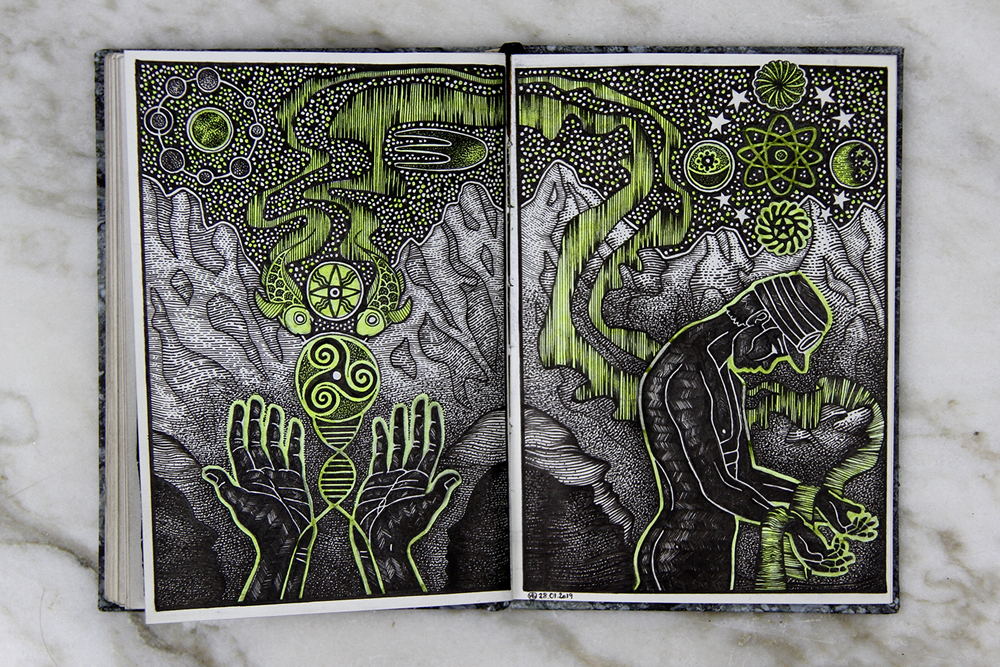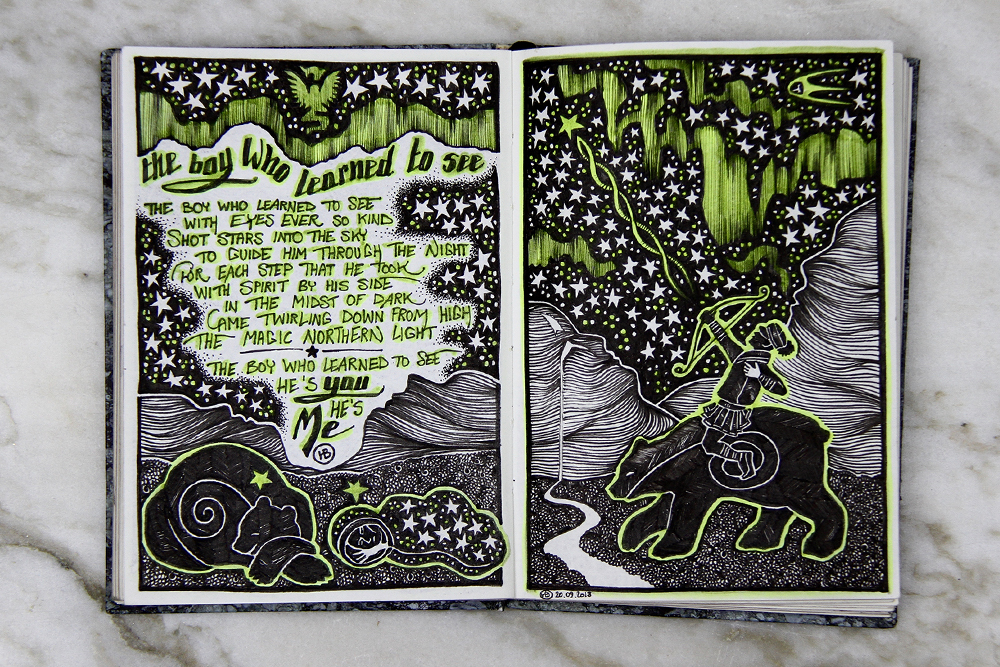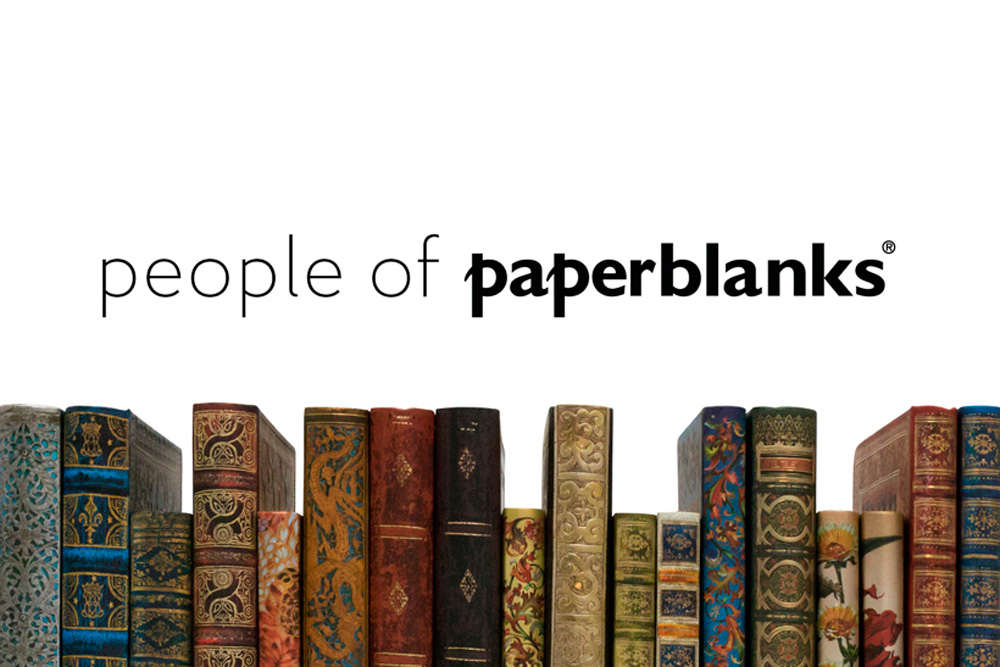Sometimes we come across talented artists through browsing social media, sometimes our amazing Paperblanks community leads us to them and sometimes we find them in purely serendipitous ways. Once in a while it’s a combination of all three, and this is one of those times. Last year one of our readers, Laura Zimmer, decided on a whim to visit Sweden for a solo two-week hut-to-hut hike. On her fourth day she stopped at a hut to stay the night and met Halewijn Bulckaen, and they instantly connected over art and their love for nature. A talented artist, Halewijn showed Laura a series of stunning and mindful drawings he had created in his travel notebook. His work inspired Laura so much that, while reading our blog, she immediately thought of Halewijn’s travel journal and brought it to our attention (thanks, Laura!). “Every little corner of his drawings tells a story,” says Laura, “and it’s up to you to find yours.”
We believe in community over competition and we love to see creatives supporting other creatives, and hearing about who inspires you. We are thrilled to share with you our interview with Halewijn.
Based in Karlskrona, Sweden, Halewijn is an illustrator, embroiderer and jewellery artist whose intricate, award-winning work has been part of several group exhibitions in Sweden and Belgium. But what really caught our eye is his great passion for nature, Scandinavia and Indigenous cultures and how, through his work, he strives to spread a positive message of unity, much needed during these times.
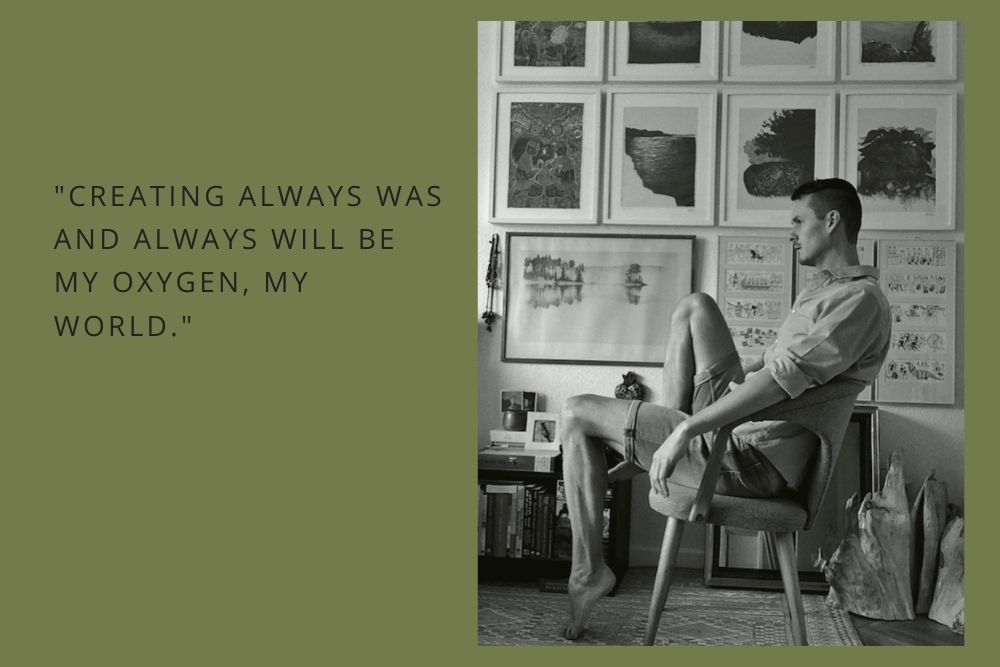
1) When and why did you decide to become a professional artist?
As I grew up in a very creative and artistic environment, it always felt natural to use visual arts as a tool to express emotions, dreams and ideas. To be honest, I never really call myself an artist at all; creating always was and always will be my oxygen, my world. I prefer to focus on creating, and I leave the judgement and titles to others. I see myself rather as a “creator of worlds”; a storyteller living in the borderland between dream and reality. My life goal is to spend as much time as possible creating – regardless if it’s by drawing, making embroideries, designing, crafting, photographing, sharing positive energy, teaching, dancing or living Nature experiences. With our given skills we can bring so much positive energy to this world, and that’s what I want to contribute to.
2) Has anyone or anything in particular inspired your creativity and artistic passion?
My family has many persons skilled in illustration, embroidery, calligraphy and other crafts. As a child, my mother and grandfather inspired and motivated me a lot with their art and creativity.
Art Nouveau, the Golden Age of Illustration, the work by photographer and ethnologist Edward S. Curtis, the illustrations by John Bauer, the journals by Peter Beard and the dreamy music by CLANN also inspire me… but when it really comes down to it, what mostly ignites my creative energy is the organic growing of plants, the sublime beauty of Nature, the wondrous variety of flowers, insects and wildlife, the divine spiritual energy of the mountains and the mystery of the heavenly skies, the intricate ways that shamanic cultures harmonize and interact with Creation.
3) How would you describe your personal style and aesthetic?
Spiritual fairy-tale naturalism maybe? Most of my creativity is linked to Nature and Indigenous shamanistic cultures. I love natural materials, eclectic mixtures of shapes and colours, detailed horror vacui, worlds within worlds, stories within stories… like the forest; an overflow of life, in a macro- and microscale; layers over layers, all depending on the eye of the spectator.
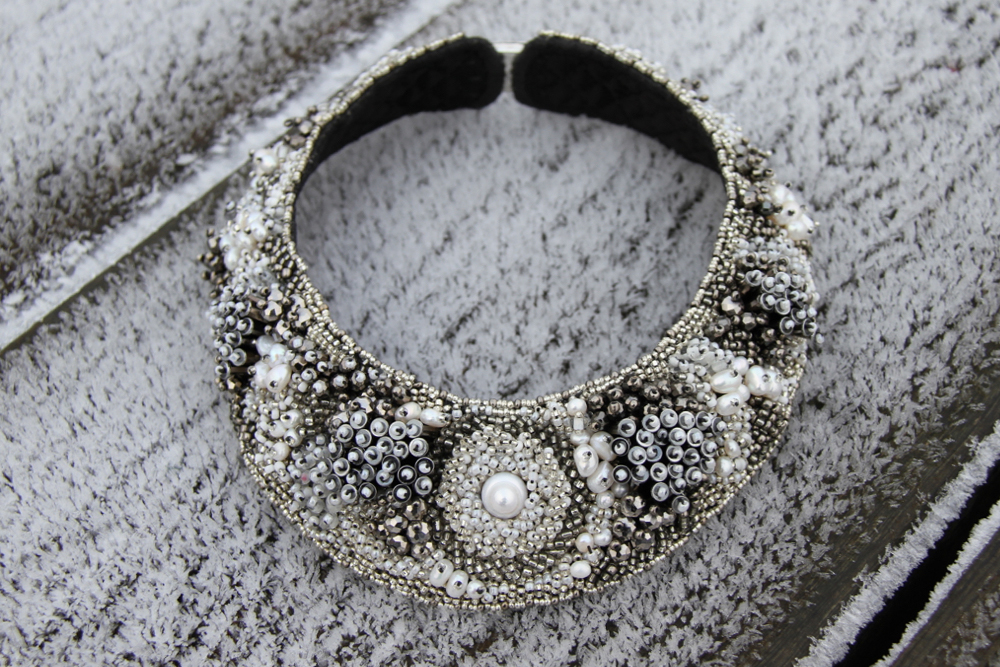
4) How has living in Sweden formed you as an artist?
I grew up in Belgium, Ecuador and Spain, but when I moved to Sweden 15 years ago, it always felt like coming home. Scandinavia and the Arctic world were love at first sight, a feeling that always remained and still grows stronger. The proximity to Nature symbolizes a meaningful life to me; I love the Arctic and its climate, the endless forests and the old mountains, the elk and the reindeer, the starry skies and the magical northern lights, the tangible sensation of spirit, elves and the world of lore…. At the same time, it also intertwines with my childhood memories of the colorful Andes peoples, the meticulous Flemish primitives painting, the rich ethnic embroideries and exotic jewelry…. My identity and creativity mirror the life journey and experiences I have had so far.
5) We are fascinated by your Sápmi art project. Can you tell us more about it?
The Arctic – Sápmi – and its native people – the Sami – have always captured my heart and imagination. This ongoing art project started off as a travel journal while hiking in the Arctic, but gradually evolved into a visionary journey to personal purpose and heart. Indigenous cultures behold the Wisdom of Old, yet still; discrimination and cultural injustice are (still) a current reality for many Native people. As in most shamanistic cultures, their story is very much intertwined with a deep respect for – and understanding of – Mother Nature. To me, the Sami represent a life philosophy that resides on a “higher plane of existence” – and Sápmi (the Northern region of Sweden, Norway, Finland and Russia) beholds an energy that always keeps on calling me back. By integrating elements of the Sami culture in my work, I try to show gratitude for the beauty it gives me, while at the same time aiming to create awareness for the value in their culture.
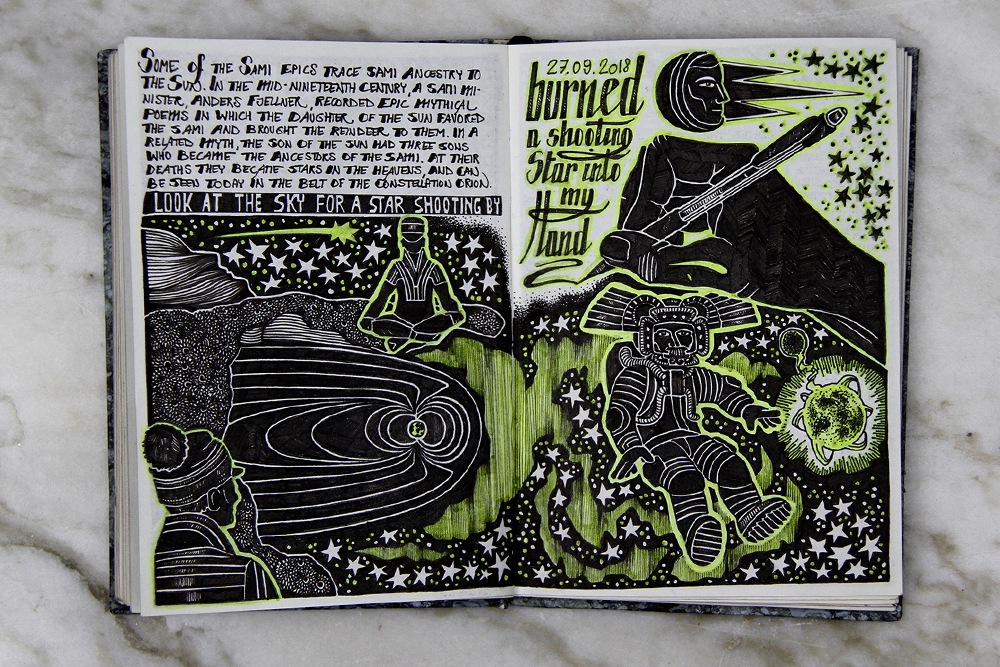
6) What do you think are the benefits of keeping a travel journal?
As I usually hike and travel alone, each journey develops as a deep, almost spiritual experience. Physical endurance and Nature beauty turn the outdoor experiences into a conversation with my own thoughts and strength, in an interaction with Mother Nature and Spirit. In no wi-fi territory, thoughts roam free, the air is fresh and swift thoughts come and go like the Arctic wind. Sometimes I wonder: was this a dream or is it reality? I like to register the thoughts by drawing and writing them in a travel journal; at those moments it somehow feels like Nature and Spirit are talking to me and using my hand to register their voice… it becomes a meaningful part of the journey.
7) Nature and ethnic cultures are predominant in your work. Can you tell us more about your fascination for Indigenous wisdom?
Indigenous wisdom has such a deep-rooted understanding and harmony with Mother Nature and Spirit; it represents values and knowledge that bring purpose, history, future and the glowing Energy of One. It speaks a universal language in a fragmented world. Society sometimes tends to discard it as primitive or as a decoration, but its true value is its content and the deeper meaning within its symbols and words. If we’d be more willing to listen to it and speak its language, we’d find it to hold the very key to our survival, well-being and for the healing of this world.
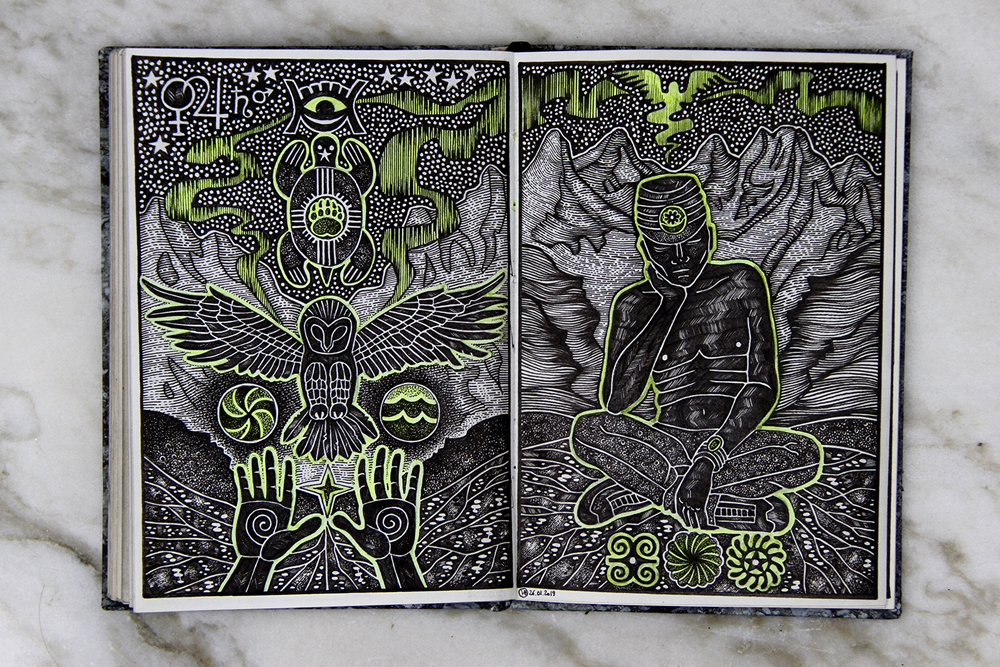
8) Sustainable design is also an important value in your work. Can you tell us why that is important and describe how you incorporate sustainability into your work?
By symbolically showing people the beauty of a flower, I try to create an appreciation and awareness where we can’t step on the flower anymore – which would as such become an active choice to destroy. Creativity gives me a choice, a voice and a possibility to help make a difference. Regardless of what creative expression I use, Nature and sustainability are often at its core – both by message, material and philosophy. To me, sustainability is something that focuses on harmony. I believe in the value of small-scaled creativity; quality over quantity. I believe in the importance of personal harmony; when we are in harmony, we’ll bring harmony to our surroundings and ultimately to this world.
9) What are your other passions in art or life?
As I love Nature, I try to spend as much time as possible in the outdoors: watching sunrises and sunsets at the seaside, making 100km bicycle trips in the endless forests, hiking in the mountains, dancing and making dance videos in the sunset light, learning about the Great Mystery, experimenting with new craft techniques….
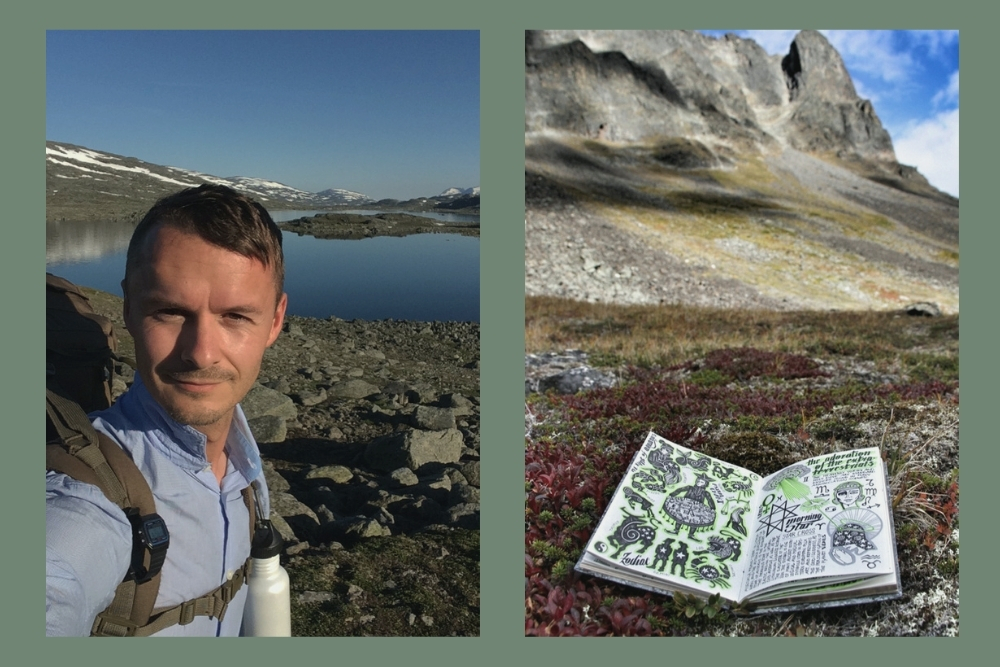
10) Are you working on any new projects you would like to share with us?
Earlier this year I won an art grant to make a personal interpretation of a traditional folk art object, which in Swedish is called a “festträd” (a party tree). For this art project I use woodwork and pearl-embroidery, and I decided to also collaborate with two other talented local artisans: a ceramist and a coppersmith. This creation will be part of an exhibition at the Blekinge Museum, in Karlskrona, Sweden, in November–December 2020.
Otherwise you can also see some of my couture embroidery work featured in the art project “Between These Folded Walls, Utopia,” by photographer duo Cooper & Gorfer, currently on view at Fotografiska museum in New York, until February 28th 2021.
You can find more information about Halewijn on his website www.atelierhalewijn.com and on his Instagram accounts @atelierhalewijn and @halewijn_offduty
